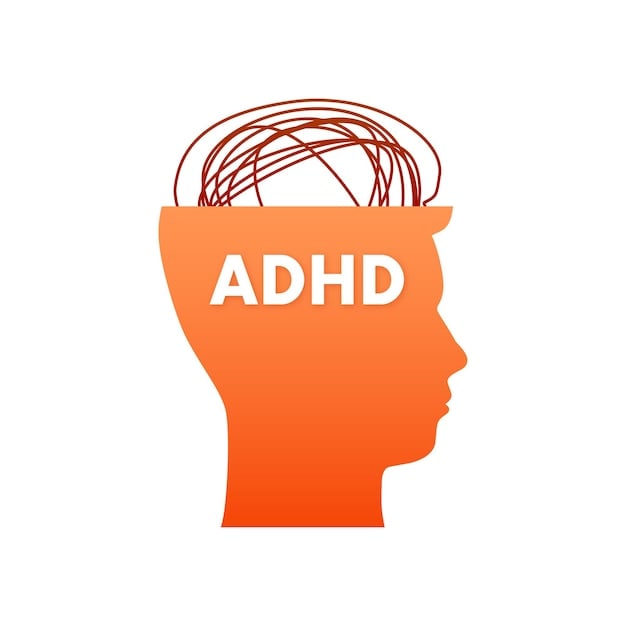

Unfortunately, the entire thing is plagued by politicians, so it is falling apart.
Then the structure of your government is trash.
Ex-Redditor. I have big autism, big sad-all-the-time, and weird math energy.
Interests
Dislikes


Unfortunately, the entire thing is plagued by politicians, so it is falling apart.
Then the structure of your government is trash.


Yep. Now I just know all the shit I failed to do today :\


Would you like to provide those receipts?


Yeah. If the signal changed from 0V to +3V, in any way, at any time, then technically it is AC. However, we might treat it as DC for engineering purposes depending on the context. If the system the DC current is going into is stable and responds quickly enough, we can ignore the effect that “starting” the signal will have. However, most non-trivial circuits have non-trivial dynamics, so we need to make sure that, at a bare minimum, they can be started properly.
Dynamic circuits have, amongst other things, resistances, inductances, and capacitances. Resistors are boring; put in a current I, get back voltage V = IR. Circuits with only resistances are not dynamic. Capacitances and inductances are themselves dynamic elements. For them to exhibit any interesting behavior, the signal (input current or voltage) needs to be changing. Circuits can (but will not necessarily) experience weird behavior when turning on if the power is taken from zero to some voltage too quickly. For example, if a current in an inductor is set from zero to a nonzero constant, you will get a huge (theoretically infinite) spike in voltage. This is because voltage across an inductor is proportional to the rate at which the current signal changes. In the case of a current switched from zero to non-zero, the change from zero to not-zero happens almost instantly, implying a voltage that approaches infinity as the transition becomes steeper. Practically, you get a voltage spike which, when multiplied by current, could generate enough power to blow up whatever you’re working on.
I didn’t mention this in any of the comments, but real “DC” sources are dirty. Noise is a class of signals that can take on random values at all times. The fact that it can be a different random value at any time implies that noise is a subclass of AC signals. A “pure” source contaminated with noise is colloquially called a “dirty” source.
Dirty power supplies, the effect of turning the power on and off, and other supply imperfections are why if you look at the power sections of electrical circuit diagrams, you will see capacitors from the supply voltage to ground. The current through a capacitor is directly proportional to the rate of change of the voltage across it. A constant voltage would imply a zero rate of change, so no current is going through the capacitor. Colloquially, it shouldn’t do anything unless there is a disturbance in the circuit.
Engineers generally expect power supplies to “kinda suck”, even those marked as DC. If there are any other dynamic circuits being powered by the supply (and there almost always are; we want our electronics to actually do things for us!), they will be affected and possibly compromised entirely by a dirty power supply.
I couldn’t really think of an application where blowing could be treated as a DC signal and talking could be treated as an AC signal. From an electrical engineering position, blowing is a particular subclass of speech signals, for which there is a dearth of literature, all of which hinges on the assumption that speech signals are “AC”, e.g. time-varying.


All talking is
DCAC, unless you also speak while breathing in.
Slowly varying signals like the waveforms generated by speech in all its forms are still AC signals and need to be treated as such for engineering purposes.


because all of them can also be said of DC electrical current.
I mean I can’t and wouldn’t force you to think a certain way, but that premise is false, and I thought I demonstrated as such in the previous comment.
What I can add is that actual “DC current”, e.g. that delivered by a physical, nearly-constant current source that turned on at some point in time and ostensibly will be turned off before the heat death of the universe, does have an AC component! At the very least, it will turn on and off, which is a variation in time. When we design circuits for “DC current” (or voltage), we make the assumption that the AC component is too small to be considered, and thus we just pretend that we have an ideal DC current.
So when we talk about DC current with any kind of precision, we really mean the constant part of the current waveform equal to the average value of the signal. Blowing as a set of related signals in all it’s media are not constant signals. A recording would demonstrate this, and the requirement for sound to have a nonzero frequency also rules out the possibility for a DC sound.
Now I know that analogies are loose comparisons, and if your analogy aids your understanding then more power to you, but I genuinely cannot find any way that they are analogous.


Yeah, it was and is a lot easier than desktop usage. I am lying in bed right now typing this with my phone while my desktop is playing YouTube videos. I am too lazy to pick up my keyboard and type this out.
I tried out the Reddit app for a few days during the protests, and it just fucking sucked. It was slow, buggy, and not customizable. Even in dark mode, it was too bright and gaudy for my tastes. And I had to install extra software to disable ads.
I used RiF, which was a bit like a more mature Jerboa with some features like swipe to hide posts, built-in username switching, saving post/comment drafts, and well-done integrations for embedded images and webpage links. Links I click in Jerboa currently appear in my browser history, whereas RiF opened up its own browser. Hopefully, Jerboa will add a WebView option.
More importantly, I felt like Rif was text based, as any Reddit client should be. The Reddit app uses icons where RiF would use a text field. As someone who has put in the time to learn how to read, and used that skill continuously for over two decades, it is annoying to have to freshly learn an app’s specific, increasingly abstract icons when we already have the ability to read text.
I came to Reddit for the in-depth text posts and comments. The meme communities were a nice side thing, but I was really there for the long posts, and to dump long posts of my own.
IMO, the standard Lemmy web app has more features implemented than Jerboa right now. However, I want to keep my Lemmy/Reddit history separate from my ordinary browsing. For both sites, the app allows my browser not to get cluttered with Reddit links. Jerboa currently opens up a canned tab of one of my browsers, but the browser doesn’t get info about every post I open on Lemmy, so it still does have a great deal of utility.
IMO Lemmy is really well designed from the ground up. The web app is pretty good, but I would simply rather not use it in my browser if I don’t have to.
Apparently, Reddit’s app and web interface were additionally inaccessible for blind people to use, so they resorted to 3rd party apps (although I don’t think RiF was one of their typical choices). Reddit has allowed a few select non-commercial accessibility-focused apps to use their API for free, but I think that the status of serving NSFW content to these 3rd party apps is tenuous. The concern was that for all practical purposes, Reddit unilaterally decided that blind people could not interact with NSFW content. Now I just checked /r/gonewild, an established porn sub, and /r/erotic literature, a text-based erotica sub, on RedReader. So far, it is fetching new content for both subs. However, I have not checked any other apps (other than RiF, which is just completely dead) or subs. Anyone with more perspective on the current situation for blind users, please reply.
Lastly, I didn’t moderate any communities on Reddit, but apparently, moderating through the Reddit app or their modern interface sucked. Somehow, the 3rd party apps had much better tools than Reddit’s own app.
For me, RiF was the “frontpage of the internet”. I’ll miss it, but Lemmy has given me hope for the future of the internet for basically the first time in my life. Jerboa is currently the primary way that I access Lemmy, so I am rooting for it’s success, as well the other Lemmy apps and Kbin.
I can already imagine it being used in a phrase with something about jumping off cliffs and being brainless followers and whatnot.
Yeah I’m okay with that. It’ll keep us humble when we inevitably screw up.


[Air] being blown out of your mouth is similar to DC ( direct current ) and that it’s a continuous wave of air with frequency zero.
Nope. You can’t have sound without a vibration. A vibration of zero frequency is constant for all time. When you blow air, you get a bunch of “not-zero” frequency noise from the actual movement of air. Even if you could somehow blow a perfectly DC (0Hz frequency) wave, the fact that you started at some point of time mathematically implies that there are higher frequencies in the signal. [1]
To convince yourself of this, record an audio clip of yourself blowing into a microphone. Any mic will do, just don’t overload it.[2] Open up the audio file in Audacity, Ardour, or any other audio program that can display waveforms. It will be oscillating quite a bit.
This also indicates that approximating sound as a constant waveform is not a good engineering decision. As an hobbyist audio programmer and electrical engineering major, it would make my life a lot easier if blowing sounds were constant, because then I could do away with frequency analysis and digital filtering, which is so easy to screw up. We would simply sample the constant audio waveform in whatever medium [3] it is constant.
[1] I actually had a much more detailed post in mind where I discussed Fourier series, Fourier transforms, and the exact definitions of DC values in electrical engineering, but unfortunately Jerboa ate the comment before I could submit it. Oh well, I can’t be mad since the app is so early in its lifecycle. If you need any help navigating the above pages, feel free to comment. I can also point you to more rigorous references if you need some reading material.
[2] Really, I mean not to clip any element in the signal chain. All digital audio devices have a maximum loudness. If the signal has a bunch of flat tops, like it was going to keep going higher or lower and then some jerk clipped off the highest and lowest points with scissors, you’ve clipped the signal. This is especially important for blowing because it (intentionally) moves a lot more air than ordinary talking, so try to physically back away from the microphone when you blow. Technically you can damage a microphone by blowing at it, but you probably can’t blow hard enough to blow it. It’s mostly a signal integrity issue.
[3] I have been using the word “waveform” rather loosely. The sound is physically propagated through space as related waves in pressure and particle velocity. Microphones typically respond to changes in pressure, which is converted into an analog voltage waveform. Now the pressure waveform exists over time, but also over space. Mathematically, this expresses the fact a sound might be louder or quieter depending on where in space you are relative to the sound’s source. If the electrical system is competently designed, the distribution of the voltage in space should be negligible. This expresses the reality that audio distributed through headphones sound the same regardless of where the player is located relative to the headphones, so long as all the wires are connected correctly. Ideally, once you have the pressure at a point, or more realistically an average over a small region of space, the reading is converted to a voltage that is directly proportional to the pressure waveform. In reality, there are going to be some nonlinearities, but the hope is that the waveform is as close to the original as possible under reasonable restrictions on frequency content and signal size, e.g. that the signal isn’t too fast or too big.
Furthermore, the analog waveform needs to be sampled. This generates a new waveform that only exists at discrete points in time. Then, because computers have a finite number of storage bits, the sampled waveform is quantized, or forced into one of a discrete set of values. This is the digital waveform seen in Audacity or a similar program. Furthermore, your computer has to reverse that process so it can send a voltage signal to the headphones, which finally generates the pressure variations that reach your ears.
We can use the term “audio waveform” interchangeably for all of these things, including the digital ones, because they carry (approximately; ideally exactly) the same information. This is not some hand-wavy term; information theory posits that the amount of information that a signal carries can be quantified. However, the hand-wavy explanation for it is that all of these waveforms are simply different ways to represent the same thing. For the purposes of classifying signals, sound signals should share common properties despite being in different mediums.


Coke/Cola -> Tea/infusion
Wut
Nah but seriously, they’re not interchangeable. A Coke replacement would be another cola.


It seems there’s a lot of discussion about getting rid of tipping, but I don’t know how much has changed in this regard.
Nothing has changed, and it never will, as it concerns poor and “therefore” “deserving” people. Americans’ talk is cheap.
The system seems ridiculously unfair, and that extra expense in a country where everything is already so expensive really makes a difference.
Agreed. So when you go to a restaurant and you have a maximum amount you can spend, divide the amount of money you have by (100% + local sales tax), then divide by (100% + the menu price), and subtract any surcharges added by the restaurant (assume $5.00 if you cannot look it up), often masquerading as a tip. I know it’s a lot of math, but you have a computer in your pocket. You’ll manage.
In my view, the US is a fractal scam. At every level, everything is an attempt to extract money from ill-informed “suckers”, from the running of the government, to the prices of supermarket groceries, to the tipping culture at restaurants, to even finding a place to put your car [1]. Every single thing is someone’s grift. In order to function in America, you need to be willing to be suckered to some extent. There’s no way around it. Unfairness is baked into every transaction, and increasingly more social interactions.
Everything in America is ridiculously unfair. We wear this on our sleeves, and for many Americans this fact defines their personality. Unfortunately, you will have to deal with it in the short term at least.
Now if you would like to be the one to lead the charge against the tipping culture and the foisting of responsibility for servers’ compensation onto the customer, then be my guest. Refuse to tip and make a big scene about it. Make plans for how to take the inertia of your big struggle and turn it into a mass movement. I would thrilled to join you. However, I somehow doubt that you’re ready to go that far; none of the customers who stiffed me ever went on to start anti-tipping movements.
So will AITA if I don’t tip?
Yes. You are expected by all members of the public here to tip. That is our culture, something we’re proud of for some reason, and our expectation. For some servers, tips are the primary source of income at work.
Is it really my personal responsibility to make sure my server is paid enough?
No, it is the responsibility of the employer. However, when no employer takes their responsibility and you sit yourself down at a restaurant, the logical conclusion is that either you pay that part of the server’s wages, or they get stiffed. You know that this is the conclusion. (Or if not, now you do.)
If you want to participate in our unique restaurant scam, you gotta accept that you’re going to get suckered into paying the server’s wages. Otherwise, don’t go to restaurants. When you go to a restaurant, you waste the employees’ finite time on this planet doing tedious, physically and mentally demanding bullshit that no sane person would choose to engage with, if not faced with the threats of homelessness and starvation. [2] At least make it worth their while.
Sorry if I come off as having a chip on my shoulder, but that’s only because I totally do. So many customers used to concern-troll me as a pizza delivery person and give me shit like “sorry, couldn’t afford to tip, they should really pay you more.” Yeah, they should, but you absolutely could have tipped; all you had to do was order one less topping. I’d love to see some actual solidarity with food service employees, but that would require challenging deep-rooted assumptions about our culture and we’re too shit-for-brains to do that. Americans are so compassionate and empathetic until the moment they actually have to lift a finger.
So when someone brings up “unfairness” or “it’s X’s responsibility to pay the workers” in response to tipping, I just kinda die a little inside from all the times those sentiments have been used against me and my colleagues.
[1] And don’t even get me started on the process of buying a car, or how the public was scammed into accepting a car-centric infrastructure.
[2] This is really a special case of the logic behind the antiwork movement: nobody actually wants to go to work. We only go to work under the threats of starvation and homelessness imposed by capitalism.


I’m more or less a milquetoast anarcho-communist.
If you need to use VS Code, download VS Codium instead. The product offered by Microsoft is licensed under a not-FOSS license, even though the vscode source is FOSS. More importantly, VS Code sends tracking and telemetry data to Microsoft!


I most regularly use Python, followed by MATLAB C++. Python has been practically mandatory for writing code for my undergrad research. My classmates usually know “a little” Python, and it’s pretty easy to pick up on the fly. I’m trying to phase out MATLAB for Python seeing as I’ll be graduating soon and my student license will run out. I know about Octave, but work done in Python is probably easier to integrate.
My favorite is C++. It’s the first language I learned and it feels like home. It gives me enough abstractions to get actual work done, but it also has the low-level tools I need to shoot myself in the foot for working with Arduino or other microcontrollers.
I’m looking into Rust for audio programming. Although audio programming is done almost exclusively in C++ these days, Rust’s safety features without performance penalties look like a promising language to write fast and reliable code suitable for real-time operation. Joining Lemmy and seeing how it compared to Kbin has cemented my interest in the language because so far, despite the bugs I’ve run into, Lemmy and Jerboa has been fast above all.


Yeah that stuff is a bit obnoxious, but once you get browsing it doesn’t come up, at least for me. Well worth it for no YouTube ads and making tracking more difficult.


These two are now the first apps I install on any new device:
Basically, my approach is to (mostly) prioritize text over icons, and reduce the colors I need to process.
Other apps:


Other historical artefacts like pottery, vellum writing, or stone tablets
I mean I could just smash or burn those things, and lots of important physical artifacts were smashed and burned over the years. I don’t think that easy destructability is unique to data. As far as archaeology is concerned (and I’m no expert on the matter!), the fact that the artefacts are fragile is not an unprecedented challenge. What’s scary IMO is the public perception that data, especially data on the cloud, is somehow immune from eventual destruction. This is the impulse that guides people (myself included) to be sloppy with archiving our data, specifically by placing trust in the corporations that administer cloud services to keep our data as if our of the kindness of their hearts.


Could it? Yeah, sure it could, and in some cases it will, but only if someone up the chain thinks it’s profitable. Profit motive should never dictate how archaeology is practiced.
No lol